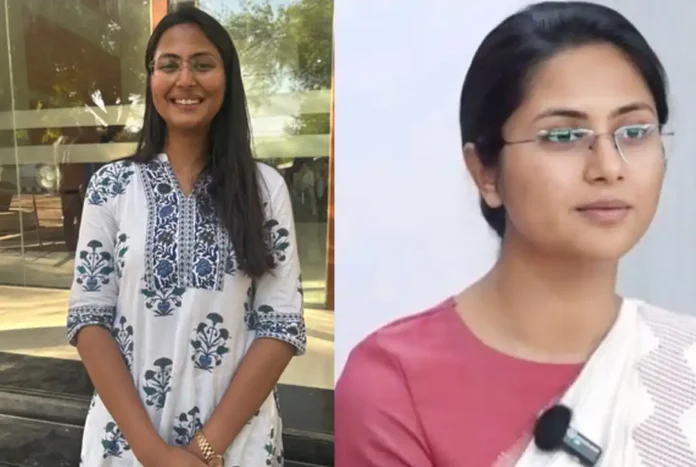In the realm of India’s civil services, few stories resonate as profoundly as that of Harshita Goyal IAS. Securing All India Rank 2 in the UPSC Civil Services Examination 2024, Harshita’s journey from the corporate corridors of chartered accountancy to the esteemed halls of the Indian Administrative Service is a testament to determination, discipline, and an unwavering commitment to public service.
Early Life and Educational Background
Born in Hisar, Haryana, and raised in Vadodara, Gujarat, Harshita’s upbringing was a blend of North Indian cultural values and Western India’s academic rigor. She completed her schooling at Delhi Public School, Vadodara, laying a strong foundation for her academic pursuits. Her passion for numbers and analytical thinking led her to pursue a Bachelor of Commerce degree from Maharaja Sayajirao University of Baroda.
Post-graduation, Harshita achieved the prestigious Chartered Accountant (CA) qualification, a feat that opened doors to lucrative opportunities in the corporate sector. However, her aspirations extended beyond balance sheets and financial statements.
The Shift from CA to Civil Services
While working in the finance sector, Harshita felt a growing desire to contribute more directly to society. Her involvement with organizations like the Gujarat Youth Parliament and the Believe Foundation, which supports children suffering from thalassemia and cancer, deepened her understanding of grassroots challenges. These experiences ignited a passion for governance and public administration, prompting her to set her sights on the UPSC Civil Services Examination.
UPSC Preparation Strategy
Embarking on the UPSC journey, Harshita adopted a structured and disciplined approach:
- Optional Subject: She chose Political Science and International Relations (PSIR), aligning with her interest in governance and international affairs.
- Study Routine: Emphasizing consistency over long hours, she maintained a balanced study schedule, integrating newspaper reading, note-making, and regular revisions.
- Answer Writing: Recognizing the importance of articulation, Harshita practiced answer writing diligently, focusing on clarity, structure, and time management.
- Mock Tests: Participating in test series helped her assess her preparation levels and identify areas for improvement.
- Interview Preparation: She honed her communication skills and stayed updated on current affairs, ensuring a confident and informed presence during the personality test.
UPSC CSE 2024 Performance
Harshita’s meticulous preparation culminated in an impressive performance:
- Total Marks: 1038
- Written (Mains): 861
- Personality Test (Interview): 177
Her exceptional scores reflect her comprehensive understanding of subjects and her ability to present her thoughts effectively.
Vision and Aspirations as an IAS Officer
As an IAS officer, Harshita aims to:
- Enhance Financial Literacy: Leveraging her background in commerce, she plans to implement programs that educate citizens on financial management.
- Promote Women’s Empowerment: Drawing from her experiences, she is committed to creating opportunities and support systems for women.
- Improve Healthcare Access: Her work with the Believe Foundation has instilled a desire to make healthcare more accessible, especially for marginalized communities.
- Strengthen Grassroots Governance: She envisions a governance model that is transparent, accountable, and responsive to the needs of the common citizen.
Lessons from Harshita Goyal’s Journey
Harshita’s story offers valuable insights:
- Pursue Passion with Purpose: Transitioning from a successful CA career to civil services underscores the importance of aligning one’s profession with personal values.
- Consistency is Key: Regular study, continuous self-assessment, and adaptability are crucial for success in competitive exams.
- Holistic Development: Engaging in extracurricular activities and social work can provide a broader perspective, enriching one’s approach to governance.
- Resilience Matters: Facing challenges with determination and maintaining focus on long-term goals can lead to remarkable achievements.
Harshita Goyal’s ascent to UPSC Rank 2 is not just a personal triumph but an inspiration for countless aspirants. Her journey exemplifies how dedication, strategic planning, and a commitment to societal betterment can pave the way to success in one of the nation’s most challenging examinations.


